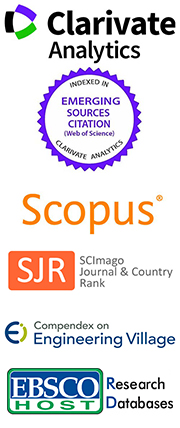Sustainable Evaporative Cooling Using Antifungal-Coated Water Hyacinth Pads
Abstract
This study presents the development of evaporative cooling pads made from water hyacinth fibers coated with Rocima 243, a broad-spectrum antifungal agent, aiming to create a sustainable and cost-effective alternative to commercial cooling media for tropical climates. Unlike conventional materials such as engineered cellulose, our approach valorizes an abundant invasive aquatic plant—Eichhornia crassipes—by transforming its fibrous stems into functional cooling media. The fibers were chemically treated to resist biodegradation and microbial colonization, addressing a key limitation of natural pads.
Water hyacinth stems were collected, dried, and woven into 15 × 20 cm fiber pads, then coated with Rocima 243 to inhibit fungal degradation. Laboratory tests evaluated fungal inhibition using five isolates (including Aspergillus spp. and Rhizopus spp.), showing colony suppression to 0.5–2 cm. The pads were installed in a small evaporative cooling rig with an airflow of 3 m/s and water recirculation, operated for 7 days under simulated tropical conditions (~33 °C, 60–80% RH). The treated pads consistently achieved a temperature drop of ~3.5°C and a saturation efficiency of ~70% while maintaining their structural integrity.
Compared to untreated hyacinth pads, which rapidly degraded under the same conditions, the treated pads-maintained shape, color, and airflow integrity. These results confirm that Rocima-coated hyacinth fiber pads can match or exceed the thermal performance of synthetic commercial media while offering ecological co-benefits such as waste valorization and invasive species management.Keywords
Full Text:
PDFReferences
Haile M.G., Garay-Martinez R., and Macarulla A.M., 2024. Review of evaporative cooling systems for buildings in hot and dry climates. Buildings 14 (11): 3504. Available: https://doi.org/10.3390/buildings14113504
Chaomuang N., Nuangjamnong T., and Rakmae S., 2023. Performance evaluation of a wet medium made of mangosteen peels for a direct evaporative cooling system. Agri Engineering 5(4): 1865–1878. Available: https://doi.org/10.3390/agriengineering5040114
Harun I., Pushiri H., Amirul-Aiman A.J., and Zulkeflee Z., 2021. Invasive water hyacinth: ecology, impacts and prospects for the rural economy. Plants (Basel) 10(8): 1613. Available: https://doi.org/10.3390/plants10081613
Abba A. and S. Sankarannair. 2024. Global impact of water hyacinth (Eichhornia crassipes) on rural communities and mitigation strategies: a systematic review. Environmental Science and Pollution Research 31: 43616–43632. Available: https://doi.org/10.1007/s11356-024-33905-7
Obando Vega F.A., Rios A.P.M., Saraz J.A.O., Damasceno F.A., and Barbari M., 2022. Comparative analysis of the cooling efficiency in tropical climate of three alternative materials for evaporative cooling pads. Applied Sciences 12(1): 77. Available: https://doi.org/10.3390/app12010077
Falchetta F., De Cian E., Pavanello F., and Wing I.S., 2024. Inequalities in global residential cooling energy use to 2050. Nature Communications 15: 7874. Available: https://doi.org/10.1038/s41467-024-52028-8
Lanxess, 2024. Product Information: Rocima™ 243. [Online]. Available: https://lanxess.com
Praiprasri, P., et al., 2018. Antifungal Properties of Preservatives for Water Hyacinth Fibers. Thailand Institute of Scientific and Technological Research.
DOI: https://doi.org/10.64289/iej.25.03A11.9624421


